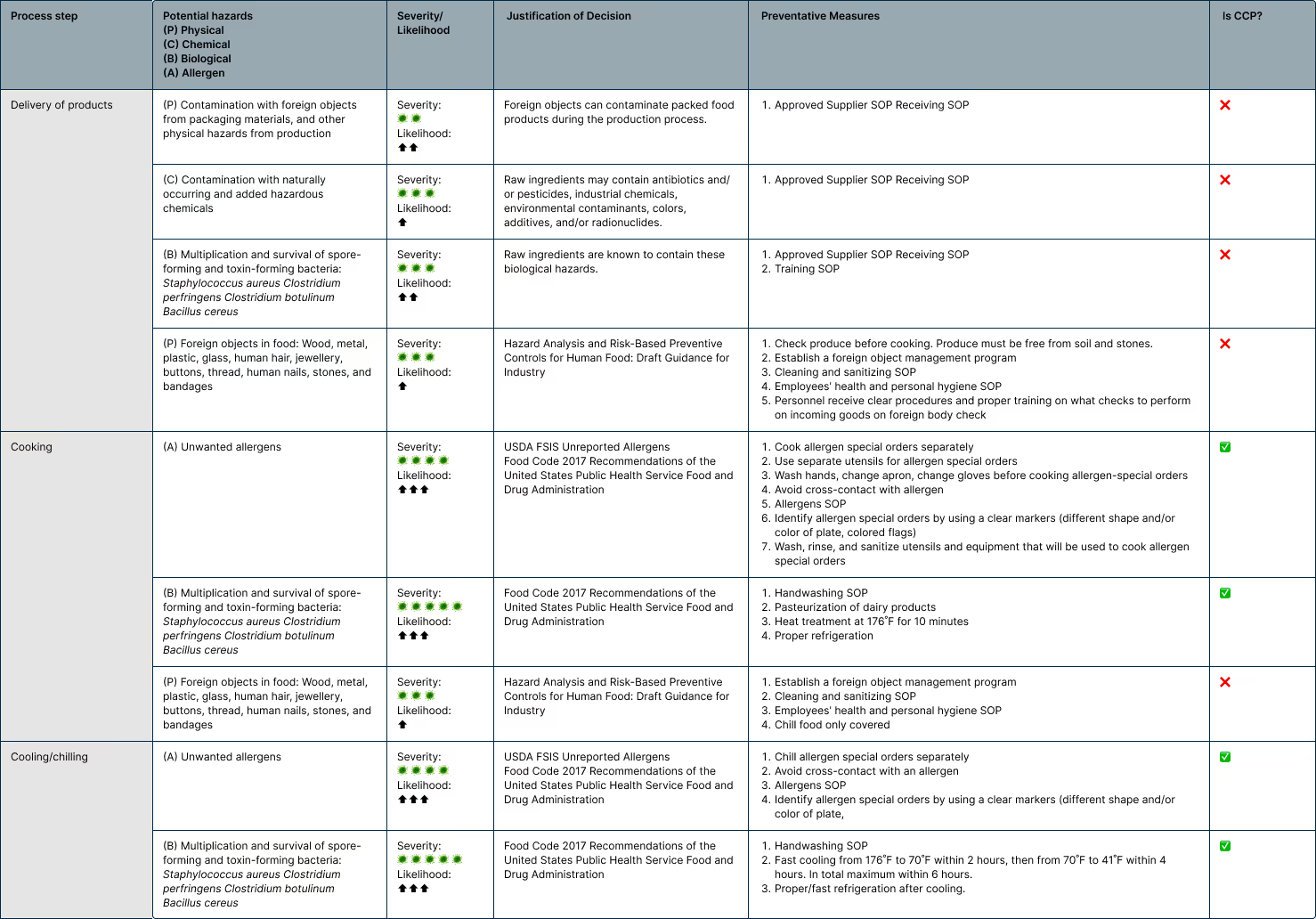What is the First Step in Developing an HACCP Plan?
We outline how you can get started with developing an HACCP plan, focusing on the first step: hazard analysis.
.avif)
How can a HACCP plan best be implemented?
An HACCP (Hazard Analysis and Critical Control Points) food safety plan is implemented by first conducting a hazard analysis, which will identify any potential food safety hazards. Once the hazards have been identified, the HACCP team can develop a plan to control these hazards.
The plan should be designed to prevent, eliminate, or reduce the hazards to an acceptable level. The plan should also be reviewed regularly to ensure that it is effective and up-to-date.
What is the first step in developing an HACCP plan?
HACCP food safety plans consist of 7 predefined principles or steps:
- Conducting a hazard analysis
- Identifying Critical Control Points (CCPs)
- Establishing Critical Limits (CLs)
- Monitoring CCPs
- Establishing Corrective Actions
- Checking if the plan works and applying verification
- Deciding how to keep track of records
However, before you can start developing your HACCP plan, you’ll need to bring together an HACCP team. The team should be composed of individuals from all areas of the food production process.
The team should have a HACCP coordinator who is responsible for leading the team and developing the HACCP plan. The coordinator should ensure that the team is properly trained in HACCP principles and procedures.
After you’ve set up your team, you can get started with the first step of developing your HACCP plan: hazard analysis.
What is hazard analysis for HACCP?
Hazard analysis is a scientific method used to identify the potential risks and hazards associated with a food product or process. It is essential to the success of any HACCP system.
Once the hazards have been identified, specific controls can be put in place to reduce or eliminate the risks.
What are the different types of hazard analysis?
There are a few different types of hazard analysis that are commonly used:
- Qualitative hazard analysis
- Quantitative hazard analysis
- Failure mode and effects analysis (FMEA)
- Hazard and operability study (HAZOP)
Qualitative hazard analysis uses a ranking system to assess the severity of potential hazards. This is often used in conjunction with a knowledge-based approach, which looks at the likelihood of an event occurring and the consequences if it does.
A quantitative hazard analysis uses mathematical models to estimate the risk of an event occurring. This can be used to help identify potential hazards and assess the risks associated with them. This type of analysis is often used in conjunction with a qualitative hazard analysis to provide a more comprehensive picture.
A failure mode and effects analysis (FMEA) is a type of hazard analysis that looks at how a system could fail and the consequences of that failure. This is often used to identify potential hazards and assess the risks associated with them.
A hazard and operability study (HAZOP) is a type of hazard analysis that looks at the potential hazards associated with a system and the operability of that system.
Which types of hazards are checked in food safety management?
In HACCP for food safety, hazard analysis is used identify four types of hazards:
- (Micro)biological hazards, like yeast, moulds and viruses
- Chemical hazards, such as cleaning agents, pest control substances, etc.
- Physical hazards, including glass, packaging and more
- Allergens, like peanuts, soybeans, nuts, etc.
Example of an HACCP hazard analysis
Below we’ve included an example of a hazard analysis you could use for HACCP. Depending on your business, you should amend this hazard analysis so it conforms to your specific circumstances.

What are the next steps in developing an HACCP plan?
As we’ve outlined above, after you’ve done your hazard analysis, you need to identify critical control points (CCP).
Once you’ve done so, you can continue with the rest of the principles of HACCP: establishing Critical Limits (CLs), monitoring CCPs, establishing Corrective Actions, checking if the plan works and applying verification.
Finally, you will need to decide how to keep track of records for your HACCP food safety plan.

